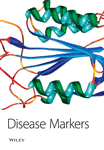Fibronectin, Plasminogen Activator Inhibitor Type 1 (PAI-1) And Uterine Artery Doppler Velocimetry as Markers of Preeclampsia
Abstract
Objective: The purpose of this study was to examine plasma levels of fibronectin and plasminogen inhibitor type 1 (PAI-1), and alterations in uterine artery (UtA) waveforms throughout normotensive and preeclamptic pregnancies and to analyze its predictive value for the detection of preeclampsia within the second trimester of pregnancy.
Material and methods: Blood samples were collected from 102 healthy, nulliparous women between the 24th and 26th gestational week. Preeclampsia developed in 13 patients; 89 normotensive control subjects were matched from the same cohort. Plasma samples were assayed for fibronectin and PAI-1 by enzyme-linked immunosorbent assay. Color pulsed Doppler examinations of UtA were performed after blood sampling. Trends were compared between two groups.
Results: Maternal plasma fibronectin and PAI-1 levels and average PI, RI and S/D ratios of patients with preeclampsia were significantly higher (p < 0.05). The best cut-off values for predicting preeclampsia of fibronectin, PAI-1, PI, RI, S/D ratio based on ROC curve analysis were 290 mg/ml, 77.3 ng/ml, 1,0615, 0.605 and 2,59 respectively. The areas under the curve equal to 0.705, 0.753, 0.689, 0.695 and 0.699 for fibronectin, PAI-1 and uterine artery Doppler PI, RI, S/D ratio were determined for the prediction of preeclampsia.
Conclusions: Fibronectin, PAI-1 and UtA Doppler are potentially useful predictors of preeclampsia. Maternal plasma PAI-1 combinated with fibronectin had the highest predictive values in our study.




